Abstract
A theoretical analysis of natural selection is presented in which fitnesses depend on population density and randomly varying environmental processes. The theory is based on a general, heuristic analysis of a pair of coupled, nonlinear, stochastic difference equations that describe the joint dynamics of allele frequencies and population size. Four main conclusions emerge from the investigation of a particular class of models: (i) growth rates at low population densities tend to increase; (ii) individual selection, given sufficient genetic flexibility, will mold growth rates at higher densities so that in spite of i, stable deterministic population dynamics are maintained; (iii) “more fit” genotypes cannot be simply characterized—in particular, the mean population size need not be increased; and (iv) genetic polymorphisms can be maintained in both haploid and diploid organisms.
Keywords: ecological genetics, r-selection, chaos, stochastic approximations
Full text
PDF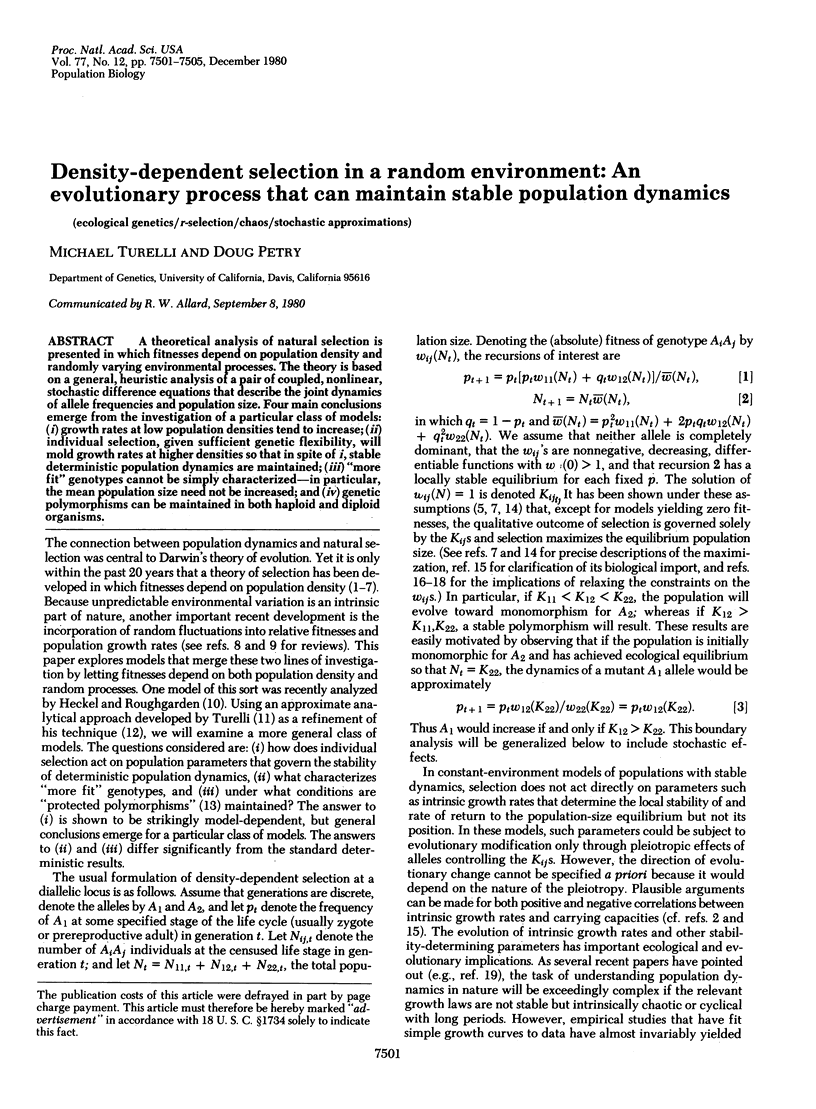
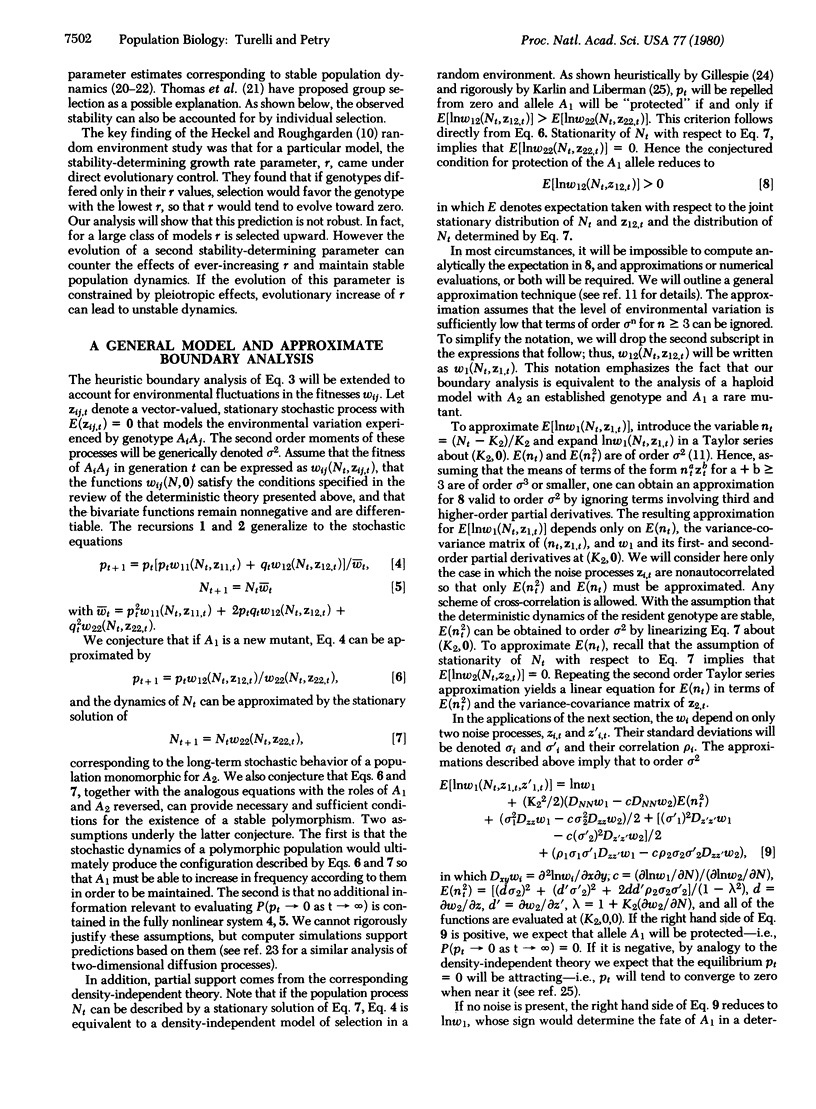
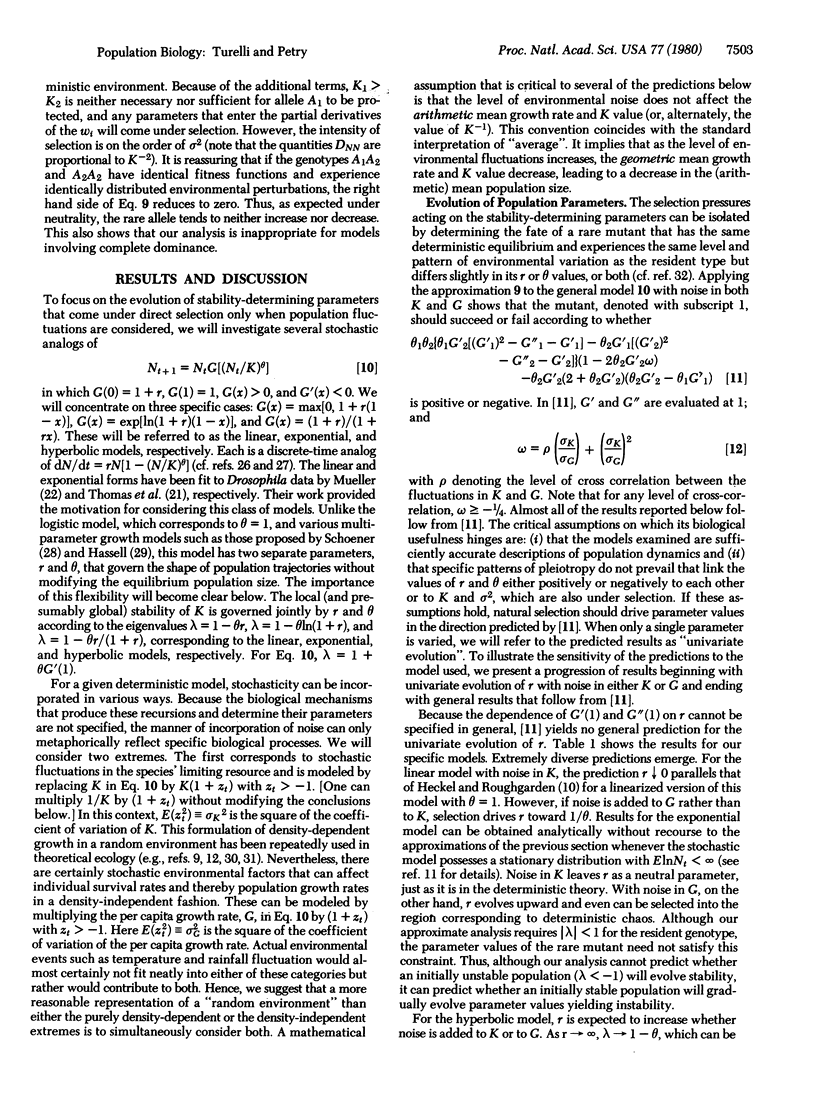
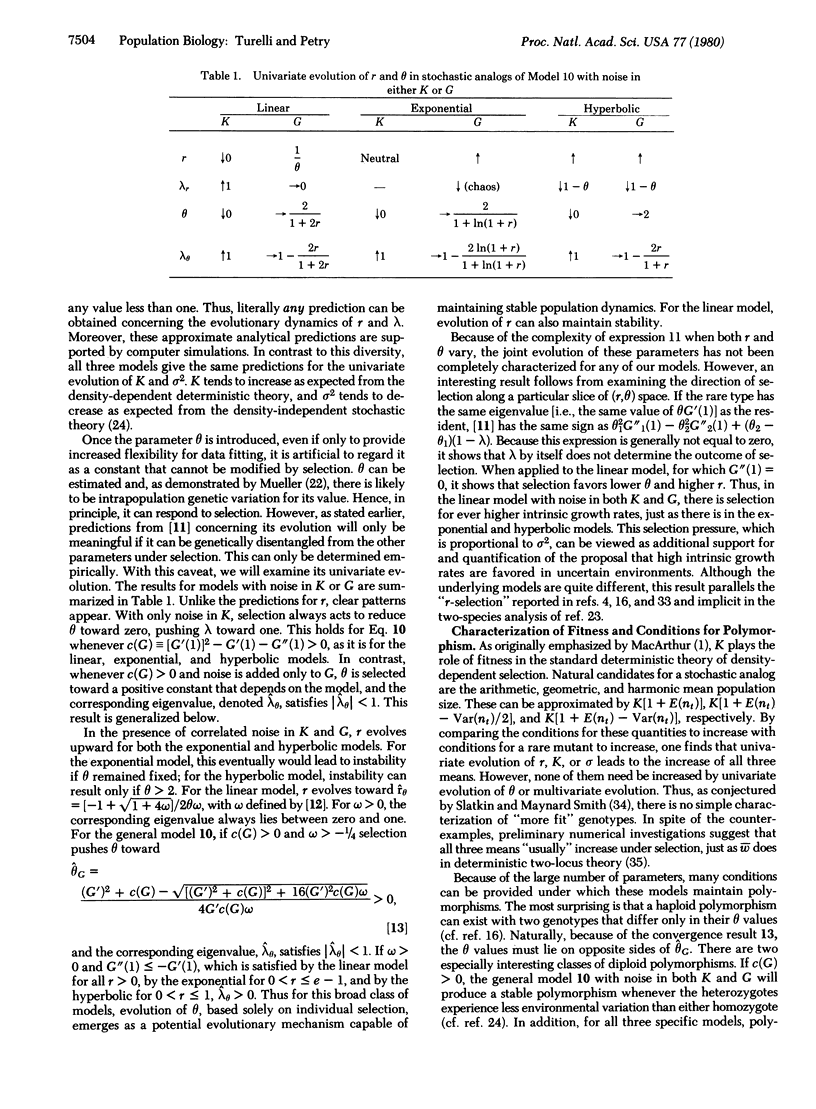
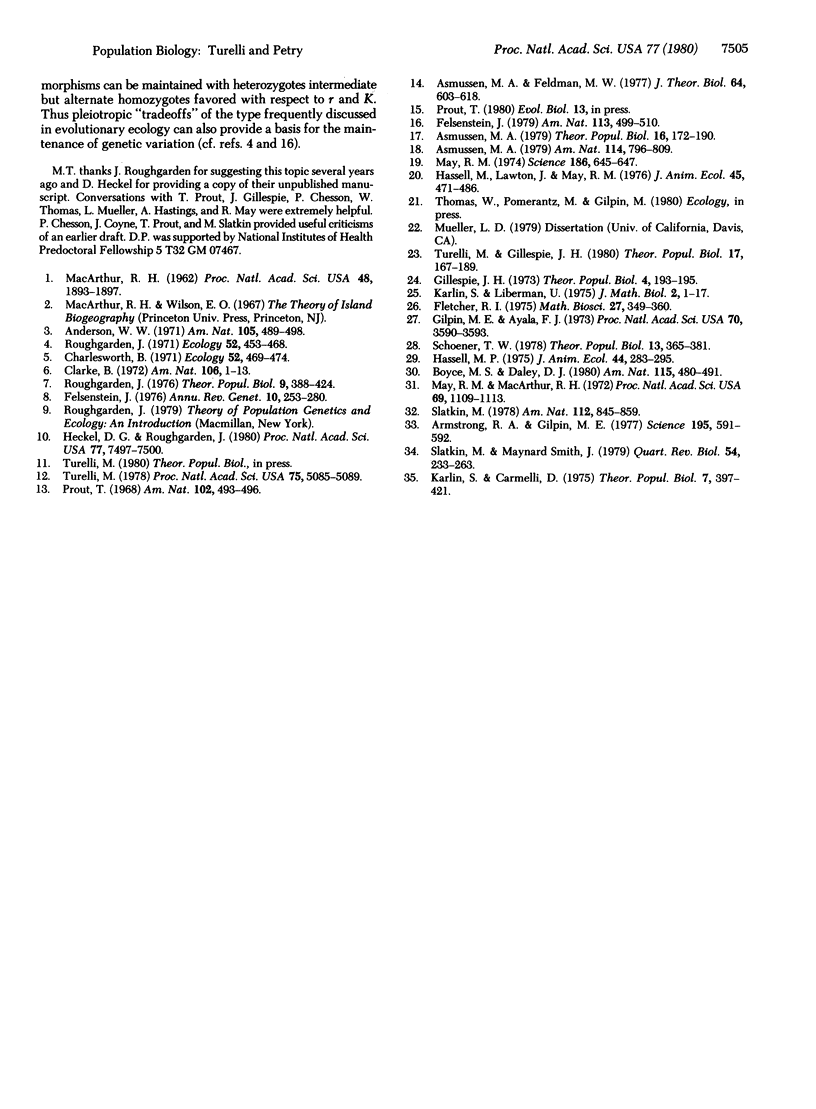
Selected References
These references are in PubMed. This may not be the complete list of references from this article.
- Armstrong R. A., Gilpin M. E. Evolution in a time-varying environment. Science. 1977 Feb 11;195(4278):591–592. doi: 10.1126/science.835017. [DOI] [PubMed] [Google Scholar]
- Asmussen M. A., Feldman M. W. Density dependent selection 1: A stable feasible equilibrium may not be attainable. J Theor Biol. 1977 Feb 21;64(4):603–618. doi: 10.1016/0022-5193(77)90263-6. [DOI] [PubMed] [Google Scholar]
- Asmussen M. A. Regular and chaotic cycling in models of ecological genetics. Theor Popul Biol. 1979 Oct;16(2):172–190. doi: 10.1016/0040-5809(79)90012-1. [DOI] [PubMed] [Google Scholar]
- Felsenstein J. The theoretical population genetics of variable selection and migration. Annu Rev Genet. 1976;10:253–280. doi: 10.1146/annurev.ge.10.120176.001345. [DOI] [PubMed] [Google Scholar]
- Gilpin M. E., Ayala F. J. Global models of growth and competition. Proc Natl Acad Sci U S A. 1973 Dec;70(12):3590–3593. doi: 10.1073/pnas.70.12.3590. [DOI] [PMC free article] [PubMed] [Google Scholar]
- Heckel D. G., Roughgarden J. A species near its equilibrium size in a fluctuating environment can evolve a lower intrinsic rate of increase. Proc Natl Acad Sci U S A. 1980 Dec;77(12):7497–7500. doi: 10.1073/pnas.77.12.7497. [DOI] [PMC free article] [PubMed] [Google Scholar]
- Karlin S., Carmelli D. Numerical studies on two-loci selection models with general viabilities. Theor Popul Biol. 1975 Jun;7(3):399–421. doi: 10.1016/0040-5809(75)90026-x. [DOI] [PubMed] [Google Scholar]
- Macarthur R. H. SOME GENERALIZED THEOREMS OF NATURAL SELECTION. Proc Natl Acad Sci U S A. 1962 Nov;48(11):1893–1897. doi: 10.1073/pnas.48.11.1893. [DOI] [PMC free article] [PubMed] [Google Scholar]
- May R. M. Biological populations with nonoverlapping generations: stable points, stable cycles, and chaos. Science. 1974 Nov 15;186(4164):645–647. doi: 10.1126/science.186.4164.645. [DOI] [PubMed] [Google Scholar]
- May R. M., MacArthur R. H. Niche overlap as a function of environmental variability. Proc Natl Acad Sci U S A. 1972 May;69(5):1109–1113. doi: 10.1073/pnas.69.5.1109. [DOI] [PMC free article] [PubMed] [Google Scholar]
- Roughgarden J. Resource partitioning among competing species--a coevolutionary approach. Theor Popul Biol. 1976 Jun;9(3):388–424. doi: 10.1016/0040-5809(76)90054-x. [DOI] [PubMed] [Google Scholar]
- Schoener T. W. Effects of density-restricted food encounter on some single-level competition models. Theor Popul Biol. 1978 Jun;13(3):365–381. doi: 10.1016/0040-5809(78)90052-7. [DOI] [PubMed] [Google Scholar]
- Turelli M. Does environmental variability limit niche overlap? Proc Natl Acad Sci U S A. 1978 Oct;75(10):5085–5089. doi: 10.1073/pnas.75.10.5085. [DOI] [PMC free article] [PubMed] [Google Scholar]
- Turelli M., Gillespie J. H. Conditions for the existence of stationary densities for some two-dimensional diffusion processes with applications in population biology. Theor Popul Biol. 1980 Apr;17(2):167–189. doi: 10.1016/0040-5809(80)90004-0. [DOI] [PubMed] [Google Scholar]


